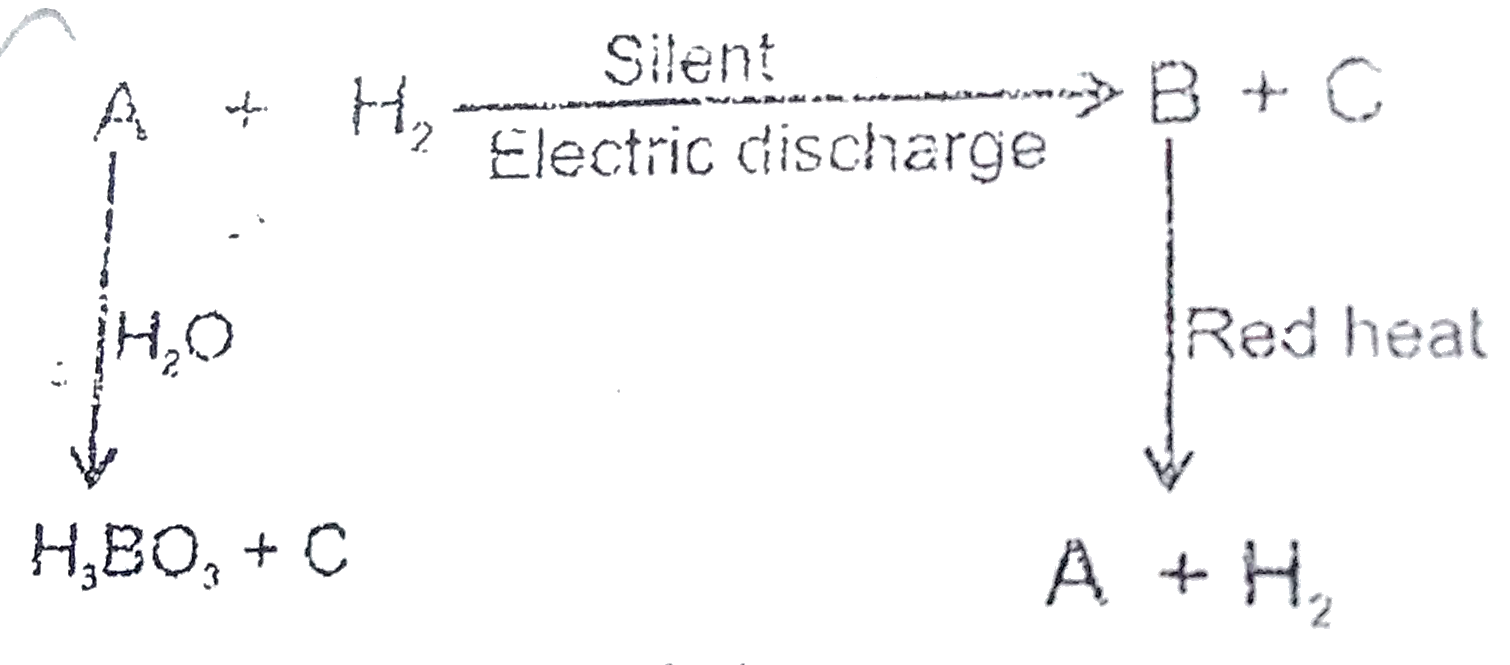Identify the statement which is correct for copper sulphate
It reacts with NaOH and glucose to give Cu2O
It reacts with KCl to give Cu2O
It gives CuO on heating in air
It reacts with KI to give brown colouration
The correct Answer is:A, C, D
To identify the correct statement about copper sulfate (CuSO4), we will analyze the given options one by one.
1. Understanding Copper Sulfate Reactions:
- Copper sulfate can react with various reagents, and we need to evaluate the reactions mentioned in the options.
2. Option 1: Reacts with NaOH and glucose to give Cu2O.
- When copper sulfate reacts with sodium hydroxide (NaOH) and glucose, it can indeed produce cuprous oxide (Cu2O). The reaction can be represented as:
CHO+2Cu2++5OH−→Cu2O+3H2O
- This reaction results in a brick-red precipitate of cuprous oxide.
- Conclusion: This statement is correct.
3. Option 2: Reacts with KCl to give Cu2O.
- When copper sulfate reacts with potassium chloride (KCl), it does not produce cuprous oxide (Cu2O). Instead, it typically results in the formation of copper(II) chloride (CuCl2) and potassium sulfate (K2SO4).
- Conclusion: This statement is incorrect.
4. Option 3: Gives CuO on heating in air.
- When copper sulfate is heated strongly, it decomposes to form cupric oxide (CuO), sulfur dioxide (SO2), and oxygen (O2). The reaction can be represented as:
2CuSO4→2CuO+2SO2+O2
- Conclusion: This statement is correct.
5. Option 4: Reacts with KI to give brown coloration.
- Copper sulfate reacts with potassium iodide (KI) to produce cuprous iodide (CuI2) and iodine (I2). The liberation of iodine gives a brown coloration to the solution.
- The reaction can be represented as:
CuSO4+2KI→Cu2I2+I2+2K2SO4
- Conclusion: This statement is correct.
Final Conclusion:
- The correct statements regarding copper sulfate are:
- Option 1: Reacts with NaOH and glucose to give Cu2O.
- Option 3: Gives CuO on heating in air.
- Option 4: Reacts with KI to give brown coloration.
Summary of Correct Options:
- Options 1, 3, and 4 are correct.
---
- Copper sulfate can react with various reagents, and we need to evaluate the reactions mentioned in the options.
- When copper sulfate reacts with sodium hydroxide (NaOH) and glucose, it can indeed produce cuprous oxide (Cu2O). The reaction can be represented as:
CHO+2Cu2++5OH−→Cu2O+3H2O
- This reaction results in a brick-red precipitate of cuprous oxide.
- Conclusion: This statement is correct.
- When copper sulfate reacts with potassium chloride (KCl), it does not produce cuprous oxide (Cu2O). Instead, it typically results in the formation of copper(II) chloride (CuCl2) and potassium sulfate (K2SO4).
- Conclusion: This statement is incorrect.
- When copper sulfate is heated strongly, it decomposes to form cupric oxide (CuO), sulfur dioxide (SO2), and oxygen (O2). The reaction can be represented as:
2CuSO4→2CuO+2SO2+O2
- Conclusion: This statement is correct.
- Copper sulfate reacts with potassium iodide (KI) to produce cuprous iodide (CuI2) and iodine (I2). The liberation of iodine gives a brown coloration to the solution.
- The reaction can be represented as:
CuSO4+2KI→Cu2I2+I2+2K2SO4
- Conclusion: This statement is correct.
- The correct statements regarding copper sulfate are:
- Option 1: Reacts with NaOH and glucose to give Cu2O.
- Option 3: Gives CuO on heating in air.
- Option 4: Reacts with KI to give brown coloration.
- Options 1, 3, and 4 are correct.
Topper's Solved these Questions
- d-BLOCK ELEMENTSBOOK - VK JAISWAL ENGLISHCHAPTER - d-BLOCK ELEMENTSEXERCISE - MATCH THE COLUMN
3 Videos
- d-BLOCK ELEMENTSBOOK - VK JAISWAL ENGLISHCHAPTER - d-BLOCK ELEMENTSEXERCISE - SUBJECTIVE PROBLEMS
6 Videos
- d-BLOCK ELEMENTSBOOK - VK JAISWAL ENGLISHCHAPTER - d-BLOCK ELEMENTSEXERCISE - Level 3
36 Videos
- CO-ORDINATION COMPOUNDSBOOK - VK JAISWAL ENGLISHCHAPTER - CO-ORDINATION COMPOUNDSEXERCISE - LEVEL 2
144 Videos
- ENVIRONMENTAL CHEMISTRYBOOK - VK JAISWAL ENGLISHCHAPTER - ENVIRONMENTAL CHEMISTRYEXERCISE - ASSERTION-REASON TYPE QUESTIONS
14 Videos
Similar Questions
Knowledge Check
Identify the statement which is not correct .
ACoordination compounds are mainly known for transition metals .BCoordination number and oxidation state of a metal are sameCA ligand donates at least one electron pair to the metal atom to form a bond .D[Co(NH3)4Cl2]+ is a heteroleptic complex .

Identify correct statement.
View SolutionIdentify the correct statements
View SolutionIdentify the correct statements
View SolutionIdentify the correct statement
View SolutionIdentify the correct statement
View SolutionIdentify the correct statement
View SolutionIdentify the correct statement
View Solution
